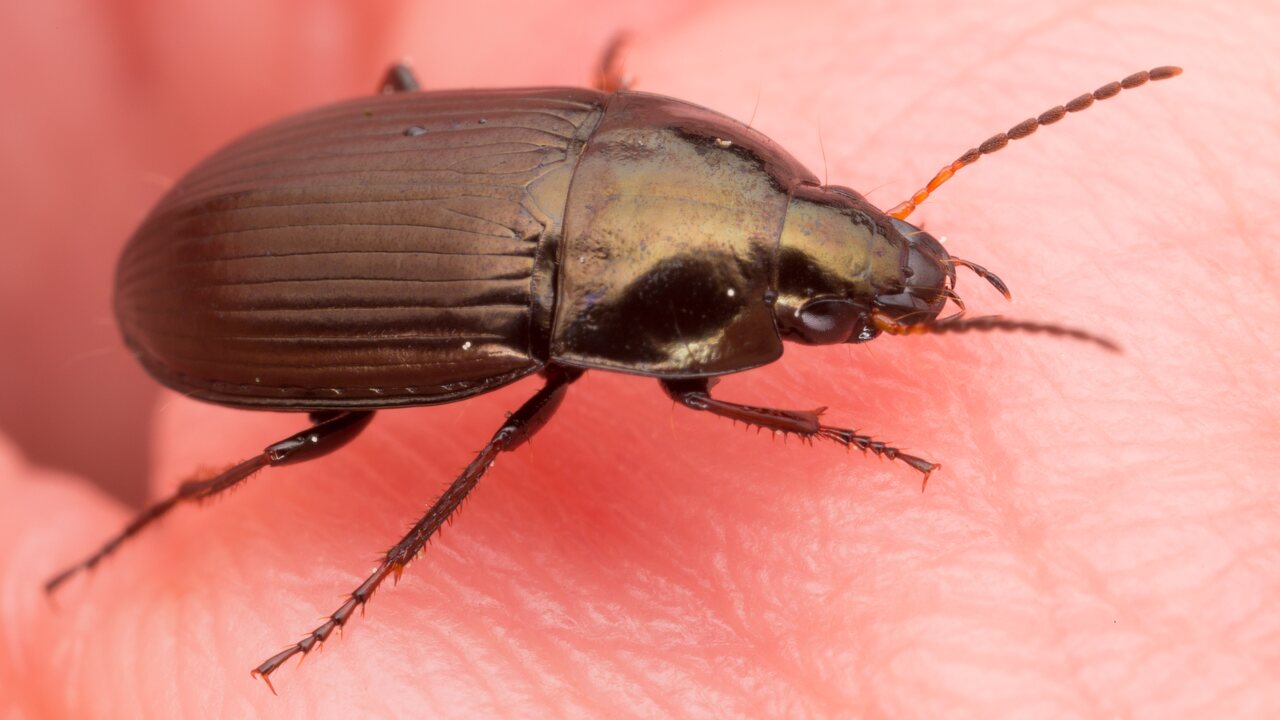
Amara aenea · žalsvasis laukažygis
- common sun beetle
- Erzfarbene Kanalkäfer, Erzfarbiger Kamelläufer, Erz-Kanalkäfer, Haarrand-Schnelläufer, Metallfarbener Schnellläufer
- skorobieżek miedziak
This is a common and often abundant species throughout the western Palaearctic region extending south into North Africa and east through Siberia to northwest China and, following introductions, it is now widespread in Canada and the north-eastern United States.
The typical habitats are dry and open situations, often sparsely vegetated and exposed to the sun e.g. dunes and sandy situations generally, agricultural and wooded borders, roadsides, parkland and gardens etc. Adults generally remain hidden by day but will venture out in warm weather when they may be seen on pathways and pavements etc., and the majority of Amara specimens thus seen will be this species, but they are mostly nocturnal.
Adults overwinter under bark or debris or in the soil and emerge early in the year to reproduce. Eggs are laid in dry soil among suitable vegetation and larvae appear in the spring, they are ground dwelling and omnivorous, feeding upon the eggs and larvae of other insects etc. as well as the seeds of a wide range of plants.
Larvae pass through 3 instars and pupate just below the soil surface, and new generation adults appear in mid-summer. The adults are also omnivorous; they climb plant stems in search of seeds. On occasion they will feed voraciously on aphids and so have been the subject of research into their suitability as biocontrol agents.‥